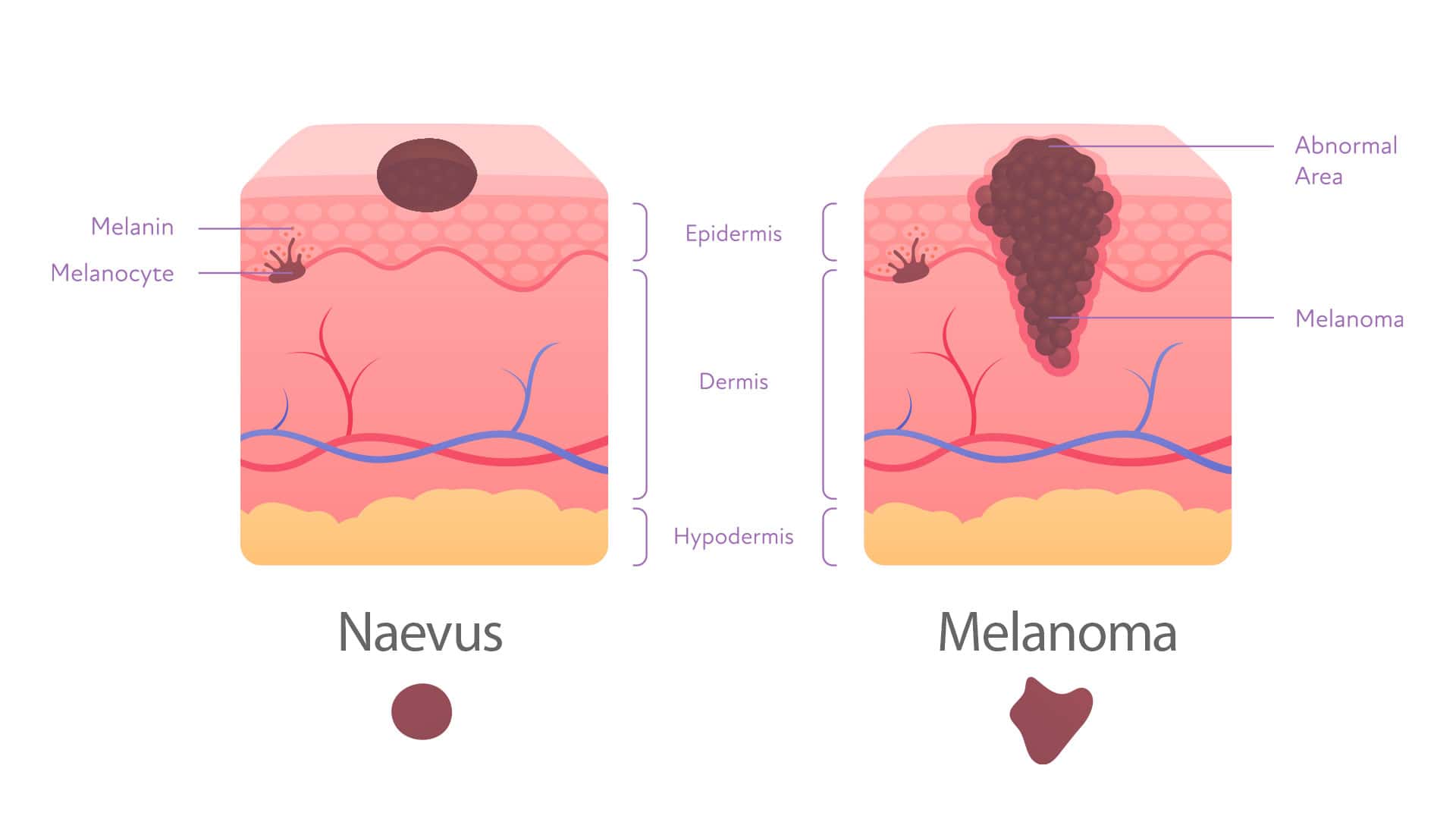What do I need to know about my moles?
Moles are made up of the pigment cells (melanocytes) which produce dark pigment (melanin) that gives the skin its colour. Melanocytes cluster together to form a mole (also known as naevus). Moles vary in colour in different skin tones. Some moles are present at birth or appear within the first two years of life and are known as congenital melanocytic naevi.
Most develop during childhood and early adult life and are known as acquired melanocytic naevi. The number of moles increases until one reaches the age of 30 to 40. New moles appearing in adulthood need to be monitored and checked for growth or change.
Moles can be found anywhere on the skin, including on the hands and feet, genitals, nails, and scalp. It can even appear in the eye.
Moles appear as flat or slightly raised light to dark brown or black lesions. Slight pigment variation and increased hairs may be seen. With time, they can become thicker. Large congenital moles may have a rough cobbled-stone surface and more colour variability.

Comparison of Melanoma and Common Mole (Naevus)
What can happen to my moles?
There is a slightly increased risk of cancerous change (malignant melanoma) in all moles. Most of the time though, moles remain benign. Any changes to moles should be looked at by your dermatologist. However, moles can change in size and shape during puberty, and pregnancy.
If a mole is deemed to have changed and has suspicious features, your dermatologist may recommend for it to be removed for histological analysis to rule out malignant change. The surgical method depends on the mole’s size and site, and potential cosmetic outcomes.
Atypical moles or Dysplastic nevi are moles with unusual features. It may resemble malignant melanoma but are not cancerous. However, those who have several (five or more) atypical moles have a slightly higher risk for developing melanoma than the general population.

What do I look out for in my moles?
Self-examination and examination of your skin with help from a close family member would be advisable if you have multiple moles or risk factors for skin cancers.
Observation is needed for the following suspicious features:





The ABCDE rule for early detection of Melanoma.
Protection against UV rays
The catch phrase is Slip! Slop! Slap! and Wrap!
- Slip on a shirt
- Slop on sunscreen. It is advisable to use sunscreens with at least SPF 30 and protection against UVA. Repeat application every four hourly
- Slap on a hat
- Wrap on sunglasses to protect the eyes and skin around them
In tropical weather, avoidance of direct sun during mid-day between 10am – 4pm is advisable.

Make An Appointment
Make an appointment online or contact a Raffles Skin & Aesthetics clinic near you to consult a dermatologist. To make an appointment, select "Specialist Appointment". Under Specialist Appointment Details, select "Anti-ageing", "Dermatology".
Make an enquiry. We will get back to you within 2 working days. You can reach us at 6311 2340 or email us.
